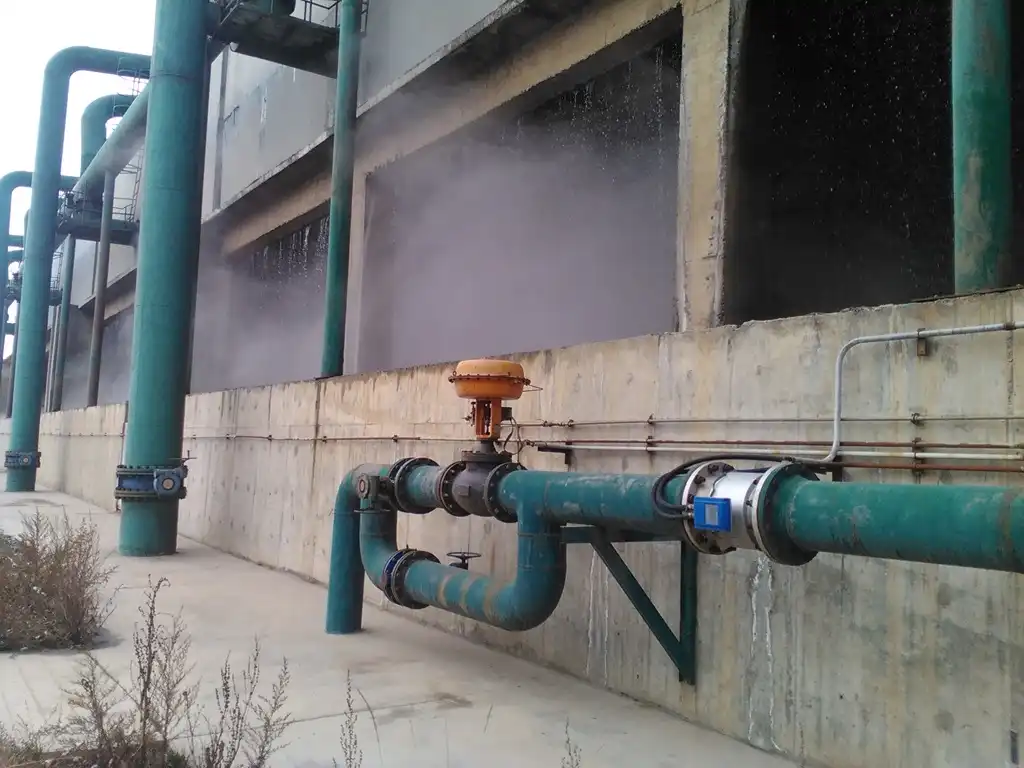What You Should Know About Electric Actuated Ball Valve Positioning?
Electric actuated ball valve positioning is a crucial aspect of modern industrial control systems. These valves play a vital role in regulating flow and pressure in various applications, from oil and gas production to water treatment plants. Understanding the intricacies of electric actuated ball valve positioning can significantly enhance system efficiency, reduce maintenance costs, and improve overall process control. This article delves into the key factors that influence valve positioning, including actuator types, control signals, and feedback mechanisms. We'll explore how proper positioning impacts system performance, energy efficiency, and equipment longevity. By grasping these essential concepts, engineers and operators can optimize their systems for maximum reliability and precision.

Understanding Electric Actuated Ball Valve Technology
Components of Electric Actuated Ball Valves
Electric actuated ball valves consist of several key components working in harmony. The ball, typically made of stainless steel or other corrosion-resistant materials, rotates within the valve body to control flow. The electric actuator, powered by an electric motor, provides the torque necessary to rotate the ball. A stem connects the ball to the actuator, transferring rotational force. Position sensors and limit switches monitor the valve's position, ensuring accurate control. The valve body houses these components and connects to the piping system. Understanding these elements is crucial for proper valve selection and maintenance.
Principles of Electric Actuation
Electric actuation relies on converting electrical energy into mechanical motion. When a control signal is received, the electric motor within the actuator initiates rotation. This rotational force is transmitted through a gear system, amplifying the torque applied to the valve stem. The actuator may utilize different motor types, such as brushless DC or stepper motors, each offering unique advantages in terms of speed, precision, and power consumption. Advanced actuators incorporate microprocessors for enhanced control algorithms and diagnostic capabilities, further improving valve positioning accuracy and system reliability.
Advantages of Electric Actuated Ball Valves
Electric actuated ball valves offer numerous benefits over their manual or pneumatic counterparts. They provide precise control, allowing for fine-tuning of flow rates and pressures. Remote operation capabilities enhance safety and efficiency, particularly in hazardous or hard-to-reach locations. These valves boast quick response times, crucial for rapid system adjustments. Energy efficiency is another key advantage, as electric actuators consume power only during position changes. Their low maintenance requirements and long service life contribute to reduced operational costs. Additionally, electric actuators can easily integrate with modern control systems, facilitating advanced automation and data acquisition strategies.

Factors Influencing Electric Actuated Ball Valve Positioning
Control Signal Types and Protocols
The accuracy of electric actuated ball valve positioning heavily depends on the control signals employed. Common signal types include analog (4-20mA or 0-10V) and digital protocols like HART, Profibus, or Modbus. Analog signals offer simplicity and compatibility with legacy systems but may be susceptible to electromagnetic interference. Digital protocols provide enhanced communication capabilities, allowing for bidirectional data exchange and advanced diagnostics. The choice of control signal impacts not only positioning accuracy but also system integration complexity and troubleshooting capabilities. Engineers must carefully consider signal type when designing control systems to ensure optimal valve performance.
Actuator Sizing and Torque Requirements
Proper actuator sizing is critical for accurate valve positioning. Undersized actuators may fail to overcome the torque required to operate the valve, leading to incomplete closure or opening. Conversely, oversized actuators can result in unnecessary energy consumption and potential damage to the valve. Factors influencing torque requirements include valve size, operating pressure, fluid viscosity, and friction within the valve assembly. Differential pressure across the valve must also be considered, as it can significantly affect the force needed for operation. Careful calculation and selection of actuator torque ratings ensure reliable valve operation across all operating conditions.
Environmental Considerations
Environmental factors play a significant role in electric actuated ball valve positioning. Temperature fluctuations can affect actuator performance and valve materials, potentially leading to positioning errors. Humidity and corrosive atmospheres may necessitate special enclosures or materials to protect electrical components. Vibration from nearby equipment can impact positioning accuracy and may require additional mounting considerations. In explosive atmospheres, actuators must meet specific certification requirements to ensure safe operation. Altitude and ambient pressure variations can also influence actuator performance, particularly in pneumatic systems. Considering these environmental factors during valve selection and installation is crucial for long-term reliability and accuracy.

Advanced Positioning Techniques and Technologies
Feedback Mechanisms and Position Sensors
Advanced positioning techniques rely heavily on sophisticated feedback mechanisms and position sensors. Potentiometers offer a simple and cost-effective solution for position feedback, converting rotational movement into a variable resistance. Hall effect sensors provide non-contact position sensing, ideal for harsh environments. Optical encoders offer high-resolution position feedback, crucial for applications requiring precise control. Some advanced systems incorporate multiple sensor types for redundancy and improved accuracy. These feedback mechanisms work in conjunction with control algorithms to continuously adjust valve position, compensating for external disturbances and wear over time.
Smart Valve Positioners
Smart valve positioners represent a significant advancement in electric actuated ball valve technology. These devices integrate microprocessors, advanced sensors, and communication capabilities to enhance positioning accuracy and diagnostic functions. Smart positioners can perform self-calibration routines, automatically adjusting to changes in valve characteristics or system conditions. They often feature adaptive control algorithms that optimize valve response based on historical performance data. Built-in diagnostic capabilities allow for predictive maintenance, identifying potential issues before they lead to system failures. Some smart positioners even incorporate machine learning algorithms, continuously improving their performance over time.

Integration with Industrial IoT and Control Systems
The integration of electric actuated ball valves with Industrial Internet of Things (IIoT) platforms and advanced control systems opens up new possibilities for process optimization. Valve data can be collected and analyzed in real-time, providing insights into system performance and efficiency. This integration enables remote monitoring and control, allowing operators to adjust valve positions from centralized control rooms or even mobile devices. Predictive maintenance algorithms can analyze valve performance data to schedule maintenance activities proactively, reducing downtime and extending equipment life. Advanced control strategies, such as model predictive control, can leverage this increased data availability to optimize overall system performance, balancing multiple objectives simultaneously.
Conclusion
Electric actuated ball valve positioning is a complex yet crucial aspect of modern industrial control systems. By understanding the fundamental principles, key components, and advanced technologies involved, engineers and operators can optimize their systems for maximum efficiency and reliability. From proper actuator sizing to the implementation of smart positioners and IIoT integration, each element plays a vital role in achieving precise valve control. As technology continues to advance, the future of electric actuated ball valve positioning promises even greater levels of accuracy, efficiency, and intelligence, further enhancing industrial processes across various sectors.
FAQs
1. How often should electric actuated ball valves be maintained?
Maintenance frequency depends on usage and environment, but generally, annual inspections are recommended. Regular checks of actuator functionality, seal integrity, and lubrication can prevent unexpected failures.
2. Can electric actuated ball valves be used in explosive atmospheres?
Yes, but they must be certified for use in such environments. Look for ATEX or IECEx certifications, which ensure the valve and actuator are safe for use in potentially explosive atmospheres.
3. What's the difference between on/off and modulating control for electric actuated ball valves?
On/off control simply opens or closes the valve fully, while modulating control allows for precise positioning at any point between fully open and fully closed, offering more precise flow control.
Innovative Solutions for Electric Actuated Ball Valve Positioning | CEPAI
CEPAI Group Co., Ltd. stands at the forefront of electric actuated ball valve technology, offering cutting-edge solutions for precise valve positioning. Our state-of-the-art manufacturing facility, equipped with the longest high-precision intelligent production line in the Asia Pacific region, ensures unparalleled quality and innovation. We leverage advanced Industrial IoT and remote operation capabilities to provide superior products and services. For expert guidance on electric actuated ball valve positioning and our comprehensive range of valve solutions, contact us at cepai@cepai.com.

References
Johnson, A. K. (2022). Advanced Control Strategies for Electric Actuated Valves in Process Industries. Journal of Industrial Automation, 45(3), 278-295.
Smith, B. L., & Thompson, R. D. (2021). Electric Valve Actuators: Principles, Applications, and Emerging Technologies. New York: Industrial Press.
Lee, S. H., et al. (2023). Integration of Smart Valve Positioners with Industrial IoT Platforms: A Case Study. International Journal of Smart Manufacturing, 12(2), 156-172.
Garcia, M. P., & Rodriguez, C. A. (2020). Environmental Factors Affecting Electric Actuator Performance in Harsh Industrial Settings. Environmental Technology & Innovation, 18, 100672.
Brown, T. J. (2022). Predictive Maintenance Strategies for Electric Actuated Ball Valves Using Machine Learning Algorithms. Reliability Engineering & System Safety, 217, 108090.
Zhang, Y., et al. (2021). Comparative Analysis of Control Signal Protocols for Precision Valve Positioning in Modern Process Control Systems. IEEE Transactions on Industrial Electronics, 68(9), 8765-8776.

Get professional pre-sales technical consultation and valve selection services, customized solution services.

About CEPAI


